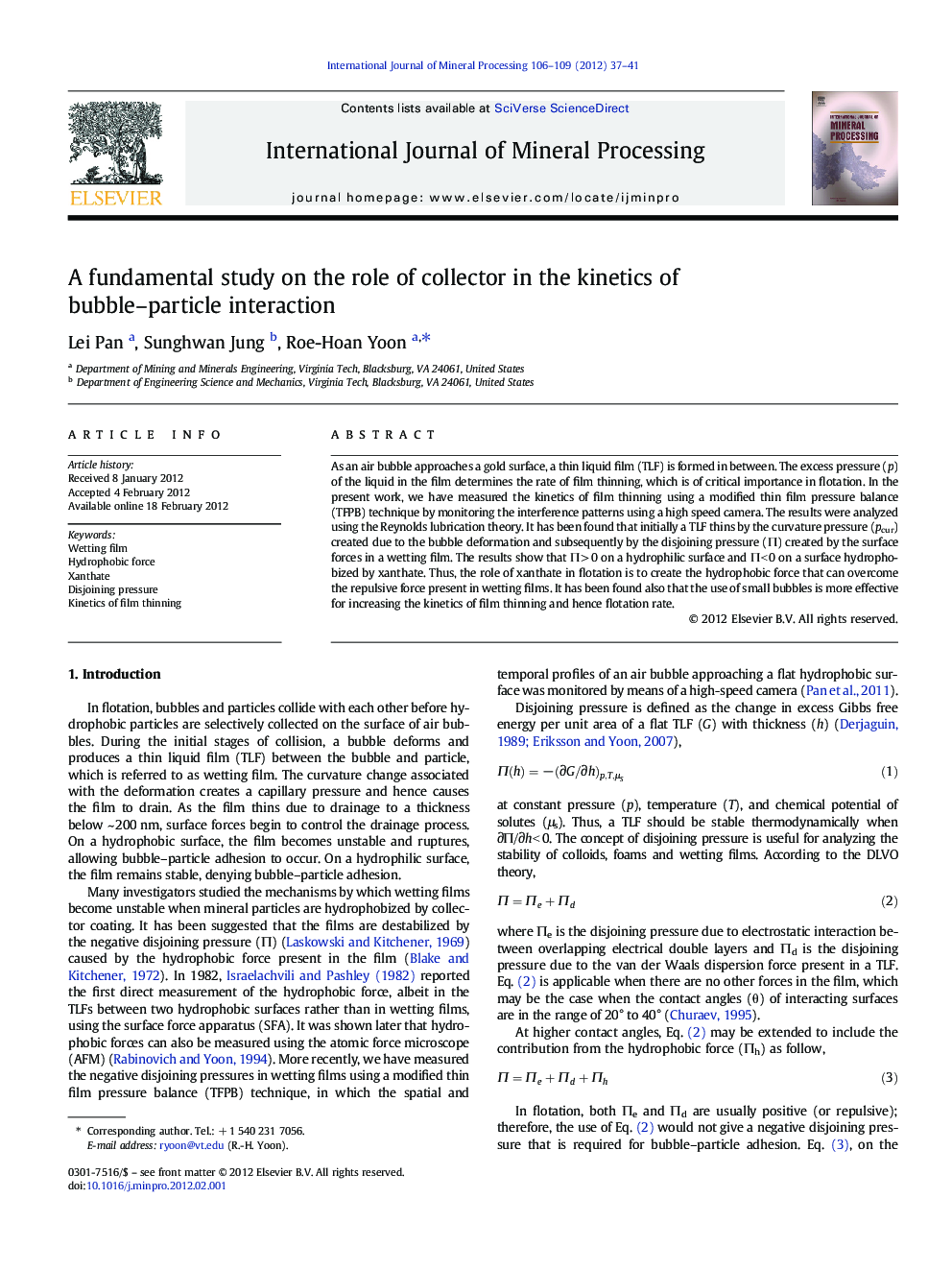| Article ID | Journal | Published Year | Pages | File Type |
|---|---|---|---|---|
| 214160 | International Journal of Mineral Processing | 2012 | 5 Pages |
As an air bubble approaches a gold surface, a thin liquid film (TLF) is formed in between. The excess pressure (p) of the liquid in the film determines the rate of film thinning, which is of critical importance in flotation. In the present work, we have measured the kinetics of film thinning using a modified thin film pressure balance (TFPB) technique by monitoring the interference patterns using a high speed camera. The results were analyzed using the Reynolds lubrication theory. It has been found that initially a TLF thins by the curvature pressure (pcur) created due to the bubble deformation and subsequently by the disjoining pressure (Π) created by the surface forces in a wetting film. The results show that Π > 0 on a hydrophilic surface and Π < 0 on a surface hydrophobized by xanthate. Thus, the role of xanthate in flotation is to create the hydrophobic force that can overcome the repulsive force present in wetting films. It has been found also that the use of small bubbles is more effective for increasing the kinetics of film thinning and hence flotation rate.
Graphical abstractComparison of the disjoining pressures (Π) in the thin wetting films of water formed on the gold surfaces with (a) θr = 17° and (b) θr = 81°.Figure optionsDownload full-size imageDownload as PowerPoint slideHighlights► Role of collector is to create a negative disjoining pressure in wetting films. ► Negative disjoining pressure facilitates film thinning and rupture. ► Flat films of smaller bubbles thin faster than the dimpled films of larger bubbles.
